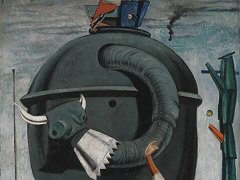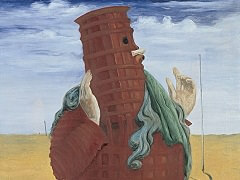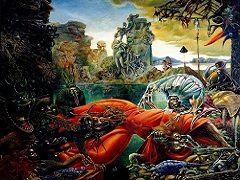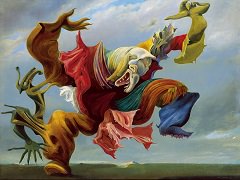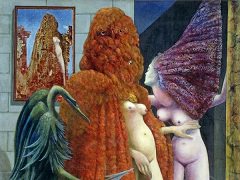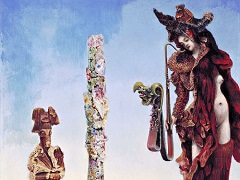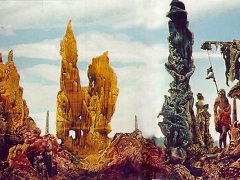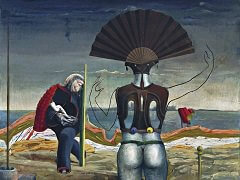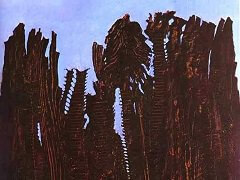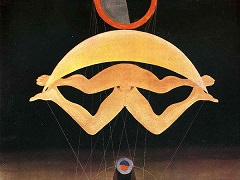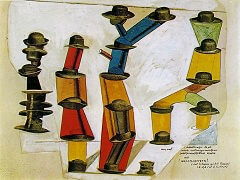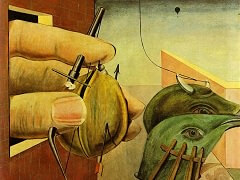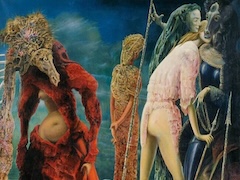The Nymph Echo, 1936 - by Max Ernst
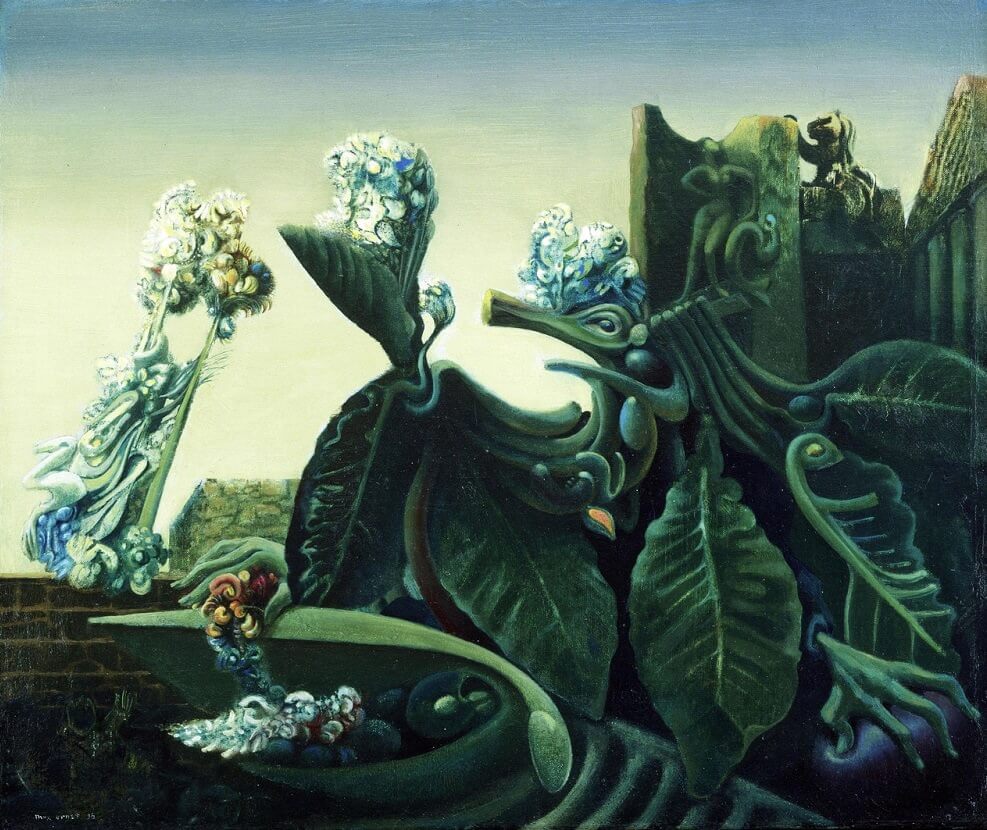
In The Nymph Echo, Max Ernst restored a surprising degree of linear control, distantly related to that of the landscapes of Henri Rousseau. Deep within the undergrouth of the forest floor, contrasting to the careful contours of the dark green leaves, are luscious pinks, blues, and magentas that miraculously transform into delicate tropical flowers, bursting from their pods in foamy effusion. Lizards, snakes, and insects stalk and slither through the interior darkness, camouflaged by eons of evolutionary time to perfectly mimic their leafy environments.
In each of these primordial settings, large bird-headed creatures with human hands peer out from the foliage to engage the eye of the viewers. Slowly the eye travels beyond this aviary king of the forest, penetrating the overgrown maze to seek and discover its hidden treasure, a small, pale green nude woman, also perfectly camouflaged besides the curvilinear leaves - the Nymph Echo.

